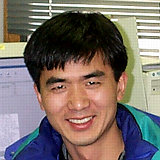|

|
Tracking Trigger R&D for High Luminosity LHC
| Abstract: |
Venue is the El Dorado - room 10 in Building 28
It has become clear that track based trigger capability will be crucial to the frontier LHC physics reach in the future, as the luminosity increases. The main physics motivation for the use of track triggers at the LHC is to avoid higher thresholds on single lepton triggers which would be necessary (in some case does not even help), both in ATLAS and CMS, to cope with the highest instantaneous luminosities foreseen for the Phase II upgrades. Track triggers can also be important for triggering on b quarks and ταυ leptons, both of which are characteristic of many new physics scenarios. However, due to much higher occupancy and event rates at LHC at high luminosity, and the fact the LHC detectors are much more massive with much larger number of channels in their tracking volumes, there is an enormous challenge in implementing track trigger capability at high luminosity (especially above 1 × 1034cm−2s−1), at Level 1, Level 2 as well as at higher level trigger (HLT). The current technology using fiber data transfer, FPGAs, custom chips and modern PCs cannot be scaled in a simple manner to accommodate all the track trigger demands at different trigger levels. Significant improvements, or breakthroughs, will be needed in order to implement powerful track trigger at high luminosity LHC environment. In this talk, we will discuss the general tracking trigger issues at high luminosity LHC and some recent R&D activities at Fermilab to address them, including a new approach of using the emerging 3D vertical integration technology to significantly advance the state-of-the-art for fast pattern recognition for high luminosity LHC as well as for applications outside HEP. |
| Speaker: |
Dr. Ted Liu - Fermi National Accelerator Laboratory |
| Speaker Bio: |
 Ted Liu received his Ph.D from Harvard in 1995 working on the CLEO experiment at Wilson Lab at Cornell. He then worked on the Belle experiment at KEK from 1995 to 1997 (as Dicke Fellow at Princeton), and the BaBar experiment at SLAC from 1997 to 2000 (as Research Associate at LBNL). In 2000, he moved to Fermilab (Wilson Fellow) and worked on the CDF experiment. He has been a scientist at Fermilab since 2004 and has been in recent years working on trigger upgrade R&D for high luminosity LHC. Ted Liu received his Ph.D from Harvard in 1995 working on the CLEO experiment at Wilson Lab at Cornell. He then worked on the Belle experiment at KEK from 1995 to 1997 (as Dicke Fellow at Princeton), and the BaBar experiment at SLAC from 1997 to 2000 (as Research Associate at LBNL). In 2000, he moved to Fermilab (Wilson Fellow) and worked on the CDF experiment. He has been a scientist at Fermilab since 2004 and has been in recent years working on trigger upgrade R&D for high luminosity LHC. |
| Poster Link: |
Poster |
| Presentation: |
Presentation on 8/8/2012 (PDF)
|
|
 Ted Liu received his Ph.D from Harvard in 1995 working on the CLEO experiment at Wilson Lab at Cornell. He then worked on the Belle experiment at KEK from 1995 to 1997 (as Dicke Fellow at Princeton), and the BaBar experiment at SLAC from 1997 to 2000 (as Research Associate at LBNL). In 2000, he moved to Fermilab (Wilson Fellow) and worked on the CDF experiment. He has been a scientist at Fermilab since 2004 and has been in recent years working on trigger upgrade R&D for high luminosity LHC.
Ted Liu received his Ph.D from Harvard in 1995 working on the CLEO experiment at Wilson Lab at Cornell. He then worked on the Belle experiment at KEK from 1995 to 1997 (as Dicke Fellow at Princeton), and the BaBar experiment at SLAC from 1997 to 2000 (as Research Associate at LBNL). In 2000, he moved to Fermilab (Wilson Fellow) and worked on the CDF experiment. He has been a scientist at Fermilab since 2004 and has been in recent years working on trigger upgrade R&D for high luminosity LHC. 
